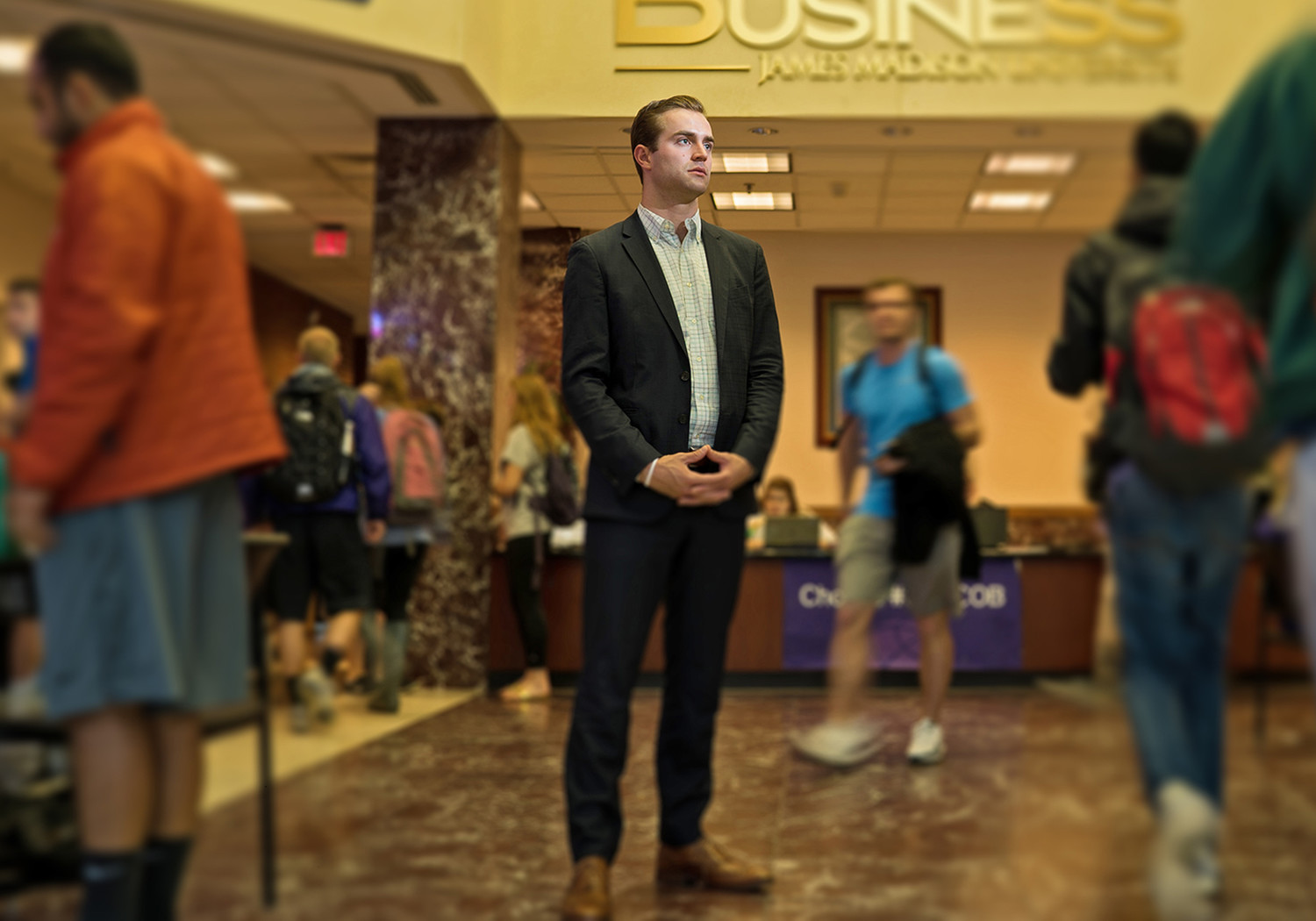The circumstances surrounding the recent Duke Hall Gallery of Fine Art exhibition “Drawing on the Left: Ben Shahn and the Art of Human Rights” could qualify as destiny at work — the perfect combination of the right people, the right place and the right time.
Shahn (1898-1969) stands among the most prominent of the socially engaged artists of his generation. As a progressive activist, he devoted his life’s work to fighting injustice and promoting the rights of marginalized and persecuted people. From the New Deal through the civil rights era, he created prints, drawings, photographs and paintings that focus on issues of poverty, unemployment, fascism, war, labor unions, the nuclear arms race, civil liberties, and racial, ethnic and class discrimination. His provocative art continues to resonate with modern audiences who see powerful connections between the artist’s work and current events.
JMU art history professor Laura Katzman is a leading Shahn scholar who worked for years to secure for the university significant gifts of the artist’s work from the Ben Shahn Estate and from art collector Michael Berg. “The coincidence of these [gifts] coming together at the same time meant that the Madison Art Collection was going to have a critical mass of work around which I could build a show,” says Katzman.
Katzman rounded out the exhibition with works from Randolph College’s Maier Museum of Art and the Smithsonian Institution’s Hirshhorn Museum and Sculpture Garden. It took a year of negotiations with the Smithsonian for JMU’s Duke Gallery to meet the exacting standards of the institution. “Proper humidity, temperature and lighting controls are important, as are security and insurance,” says Katzman. “Shahn’s works tend to be on paper, which make them particularly susceptible to humidity and light.” The Smithsonian lent four works to the exhibition, the first time that the institution has loaned artworks to JMU’s art galleries.
The gifts of Shahn’s work are an acknowledgment of Madison’s focus on undergraduate research and represent a considerable boon for JMU students. Katzman explains that Berg was interested in donating to a Virginia institution that was committed to teaching and that would use the work for various kinds of student-faculty collaborations. In addition, the original drawings in pencil and ink included in the estate’s gift are “rare and precious and often the first stages of thinking for another work of art,” says Katzman. “Incomplete works are useful for a teaching collection because students get to see the working process. While museums often seek signed works of art, teaching institutions consider all the pedagogical possibilities and therefore approach collecting and acquiring art with a different mindset.
“I … structured the show to be a laboratory for my museum studies students, so they could understand the making of a major exhibition from behind the scenes and use it as a foundation for their course work,” says Katzman. Students were asked to brainstorm ways to incorporate technology into the exhibition and to come up with their own public programs to coincide with the exhibition. In addition, Duke Hall Gallery undergraduate interns had a chance to witness the installation as well as to learn from the Hirshhorn’s conservator about the installation process, the role of a conservator and internship possibilities at the Smithsonian.
Katzman offered Meagan Stuck, an art history major with a museum studies concentration, the opportunity to be her curatorial research assistant for the exhibition. “This experience has cemented my interest in museum work,” says Stuck. “I’ve gotten to taste and see what curation is really like, and working with Professor Katzman has been invaluable.”
Thanks to Katzman’s efforts and generous donations from Michael Berg and the Ben Shahn Estate, both the JMU and Harrisonburg communities can appreciate Shahn’s culturally relevant yet timeless artwork for many years to come.
Adapted from Jen Kulju’s (’04M) article “Ben Shahn exhibition benefits JMU students, Madison Art Collection.”
Adapted from Jen Kulju’s (’04M) article “Ben Shahn exhibition benefits JMU students, Madison Art Collection.”
